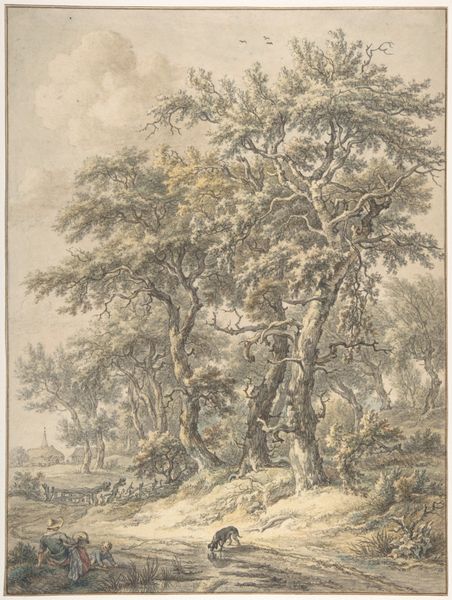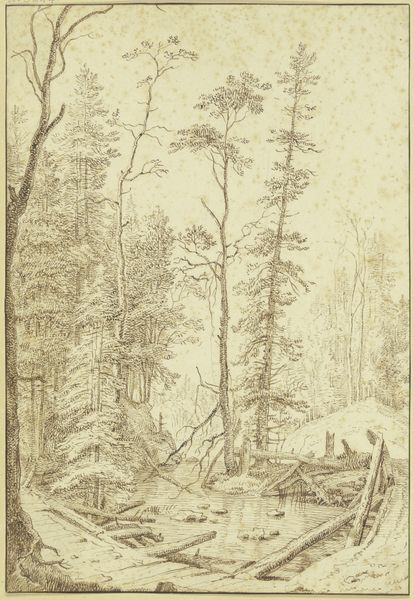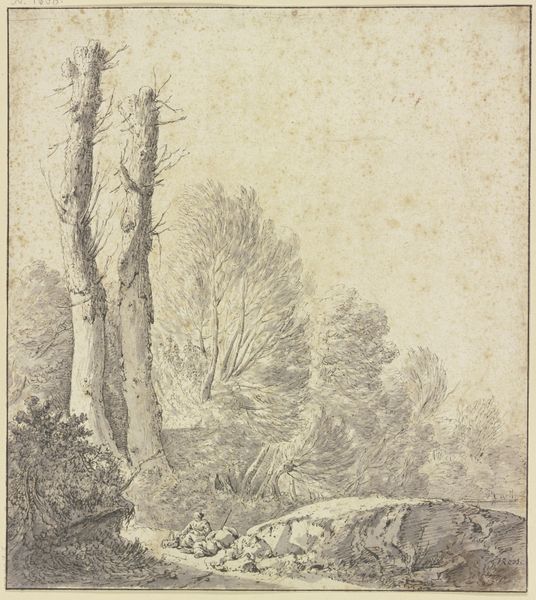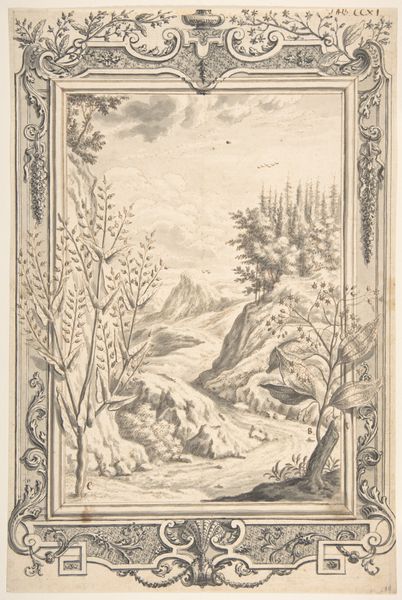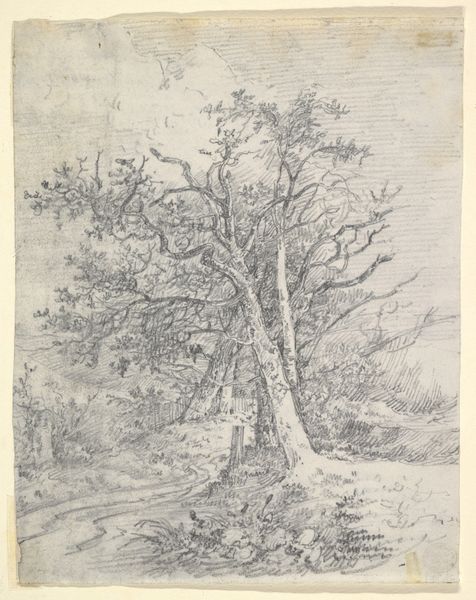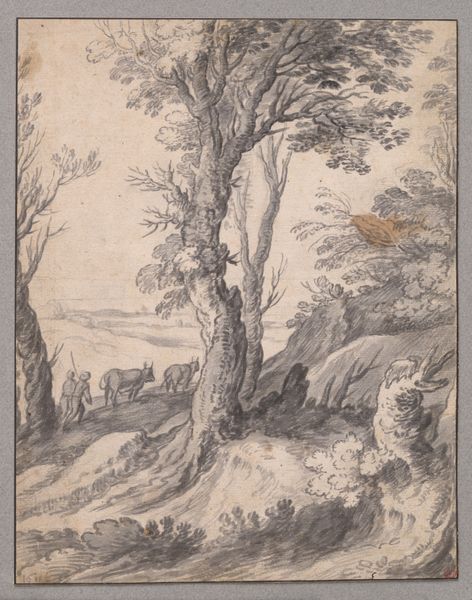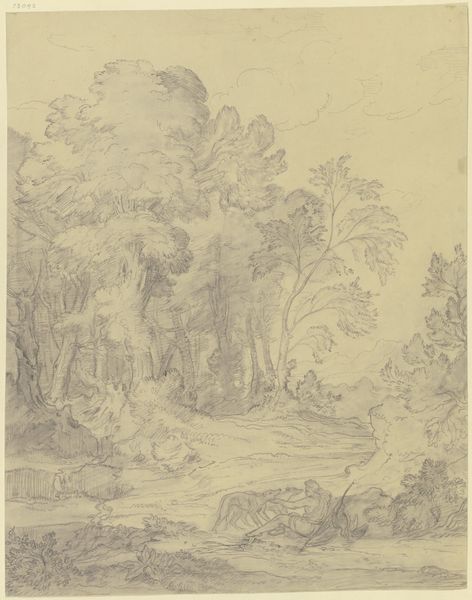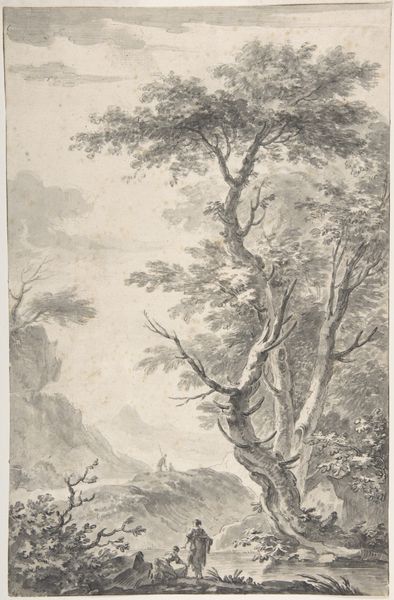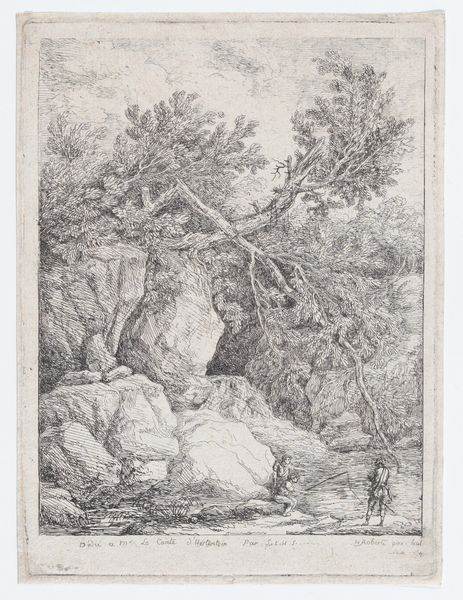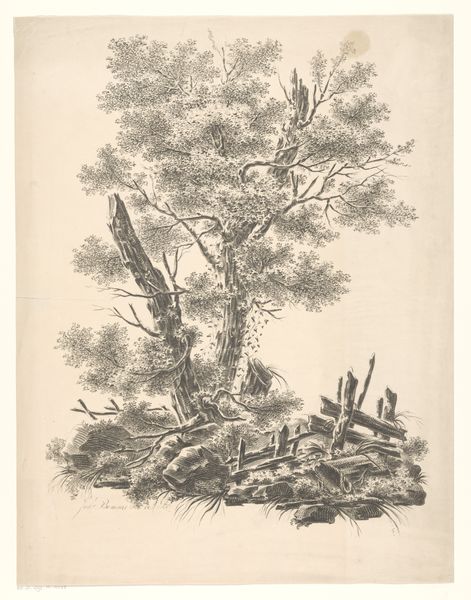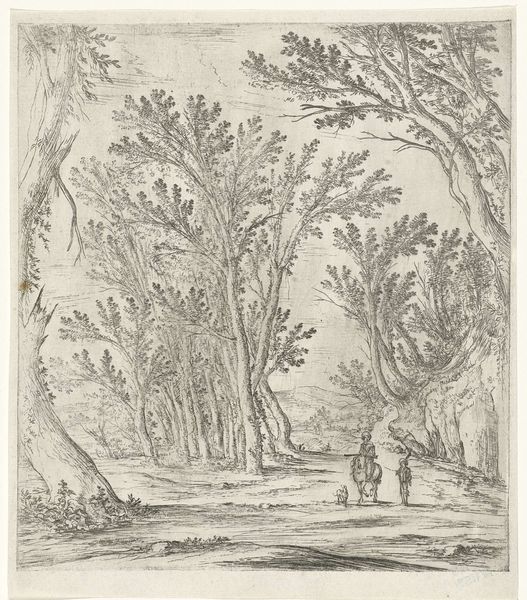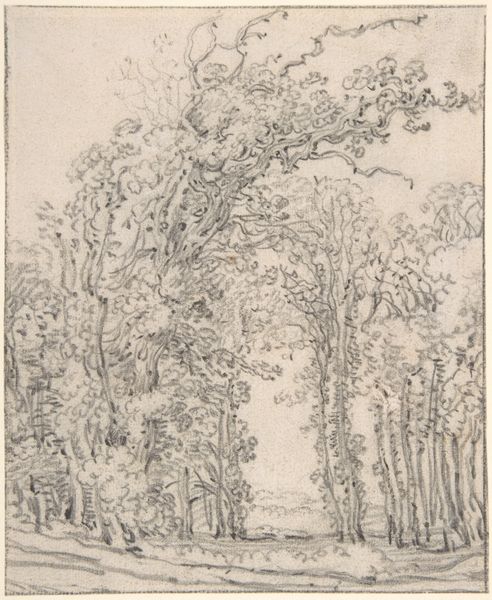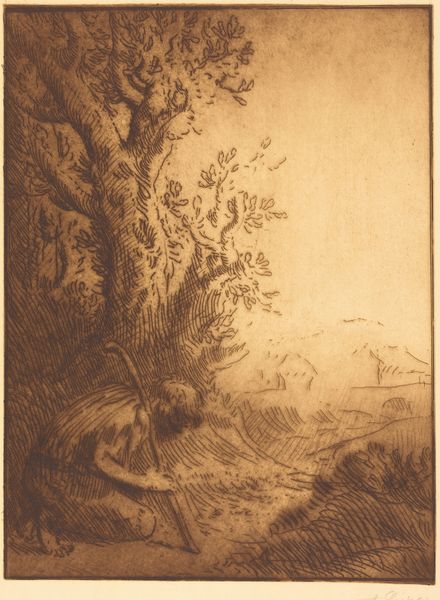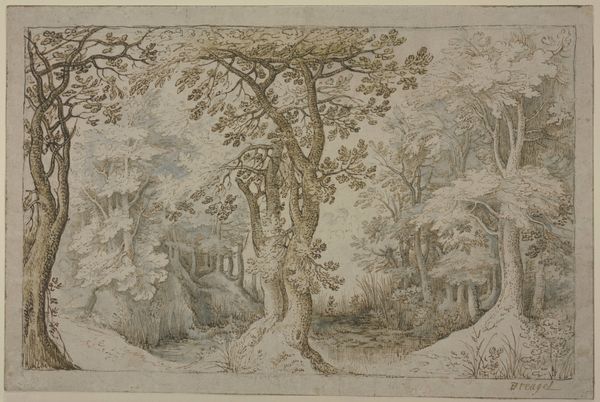
drawing, print, etching, ink
#
drawing
#
baroque
#
ink painting
# print
#
etching
#
landscape
#
ink
#
watercolour illustration
Dimensions: 11 1/2 x 7 13/16in. (29.2 x 19.8cm)
Copyright: Public Domain
Curator: "Clearing in a Wooded Landscape" by Marco Ricci, made between 1676 and 1730. It's an ink and etching drawing, and it currently resides here at The Met. Editor: There’s a raw simplicity here, a stark beauty. The monochromatic ink creates an atmosphere that feels almost ethereal, like a memory of a forest rather than a literal representation. Curator: It’s intriguing to consider the printmaking process here—the labor that went into each individual etched line to reproduce the image and disseminate these scenes more widely, playing a critical role in shaping how landscapes were perceived and consumed during that era. Ricci himself, you know, was part of a large studio, a workshop even. Editor: I agree; his landscapes evoke complex narratives concerning humanity’s place within, and often against, the natural world. In that context, I'd like to stress that it presents trees stripped bare from a post-colonial and post-industrial perspective as a reflection on land exploitation. What would you say about it? Curator: Well, I’m drawn to the actual means. Consider the different inks he likely had to experiment with to reach this very sepia tone; I understand why one can make those associations, and that this forest may have represented contested resources. For me, though, the sheer volume of prints from that era that portray forests, or quarries for example, reveals a shift toward something more systemic. What do we consume? Who benefits from it? These are questions that echo even into our modern existence. Editor: It speaks volumes, literally and figuratively. A piece reflecting power dynamics and perhaps early understandings of environmental impacts as filtered through artistic expression. We need more artworks like that in our spaces today. Curator: Absolutely. Ricci's careful hand and the medium of print serve not only as art, but also as evidence of material consumption and, indeed, potential conflicts related to environmental control and extraction that resonate today.
Comments
No comments
Be the first to comment and join the conversation on the ultimate creative platform.
